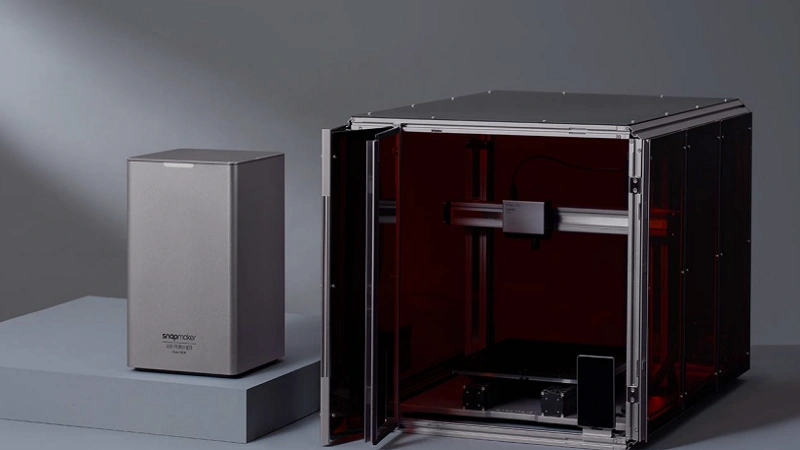The print bed, also known as the build plate or print surface, is the foundation upon which every 3D print is built. It’s the surface where the first layer of filament is deposited, and its properties significantly influence adhesion, print quality, and overall success. This article briefly introduces the different types of print beds, their purposes, and essential maintenance practices.
What is a Print Bed and Why is it Important?
The print bed is the physical platform within a 3D printer where the printing process takes place. Its primary functions are:
- Adhesion: Providing a surface to which the first layer of filament can adhere, preventing warping or detachment during printing.
- Heat Distribution: In heated beds, distribute heat evenly across the print surface to maintain a consistent temperature and improve adhesion.
- Stability: Providing a stable and level platform for the print to build upon.
A well-chosen and properly maintained print bed is crucial for:
- Preventing Warping: Warping occurs when the corners or edges of a print lift off the bed due to uneven cooling. A good print bed minimizes this issue.
- Ensuring First-Layer Adhesion: A strong first-layer bond is essential for the rest of the print to succeed.
- Improving Print Quality: A level and stable bed contributes to dimensional accuracy and consistent layer adhesion.
Different Bed Materials
Various materials are used for the best 3D printer beds, each with its characteristics:
- Glass: Offers a smooth and flat surface, ideal for achieving a glossy bottom finish. For some filaments, it requires good bed adhesion methods, such as hairspray or glue sticks. Borosilicate glass is preferred for its thermal shock resistance.
- Aluminum: Provides excellent heat distribution and is relatively lightweight. It’s often used as a base for other bed surfaces.
- PEI (Polyetherimide): A popular choice due to its excellent adhesion properties with various filaments, including PLA, ABS, and PETG. PEI sheets can be attached to aluminum or glass beds.
- BuildTak: A proprietary adhesive sheet that provides strong adhesion and easy print removal. It’s durable but can be more expensive than other options.
- Magnetic Build Surfaces: A magnetic base attached to the printer’s bed and a flexible steel sheet with a textured or PEI surface. They offer easy print removal by simply flexing the sheet.
- Kapton Tape: A high-temperature resistant tape used primarily with ABS to improve adhesion on unheated beds or glass beds.
Heated vs. Unheated Beds
Heated Beds: These beds are equipped with a heating element that maintains a consistent temperature during printing, commonly seen in the best 3D printer. Heated beds are essential for printing temperature-sensitive filaments like ABS, which are prone to warping. They also improve adhesion for PLA and other filaments. Recommended for most filaments, especially ABS, PETG, and flexible filaments.
Unheated Beds: These beds rely on other adhesion methods, such as tape or glue, to keep prints from detaching. They are suitable for printing PLA, which generally adheres well to various surfaces. Suitable for PLA and some specialized filaments that don’t require high temperatures.
Basic Bed Leveling and its Importance
Bed leveling ensures that the nozzle is at a consistent distance from the print bed across the entire printing area. Proper bed leveling is crucial for:
- First Layer Adhesion: If the nozzle is too close to the bed, it can obstruct filament flow. If it’s too far away, the filament won’t stick.
- Preventing Nozzle Damage: If the nozzle is too close, it can crash into the bed, potentially damaging both the nozzle and the bed surface.
- Consistent Print Quality: An unlevel bed can lead to uneven layers and inconsistent extrusion.
Methods of Bed Leveling:
- Manual Bed Leveling: This involves adjusting screws or knobs located at the corners of the bed to manually set the distance between the nozzle and the bed. A piece of paper is often used as a feeler gauge.
- Automatic Bed Leveling (ABL): This uses a sensor (e.g., a probe or inductive sensor) to automatically map the bed’s surface and compensate for any unevenness during printing.
Simple Tips for Cleaning and Maintaining the Bed
Regular cleaning and maintenance are essential for maximizing bed adhesion and print quality:
Cleaning:
- Isopropyl Alcohol: A common and effective cleaner for removing grease, fingerprints, and filament residue from most bed surfaces.
- Warm Water and Soap: Can be used for more stubborn residue, but ensure the bed is completely dry before printing.
- Acetone (Use with Caution): Effective for removing ABS residue from glass or other compatible surfaces but can damage some plastics. Use in a well-ventilated area.
Maintenance:
- Avoid Touching the Print Surface: Oils and dirt from your hands can affect adhesion.
- Check for Scratches and Damage: Replace the bed surface if it becomes excessively scratched or damaged.
- Reapply Adhesion Aids (if needed): If you use hairspray, glue stick, or other adhesion aids, reapply them as needed.
Conclusion
The 3D printer bed is a fundamental component that significantly impacts print quality and success. Understanding the different types of beds, their properties, and proper maintenance practices is essential for any 3D printing enthusiast. By choosing the right bed for your needs and keeping it clean and level, you can ensure consistent first-layer adhesion, minimize warping, and produce high-quality prints.
See More: Tech Newz Top
